What? |
|---|
|
The Shikoku Pilgrimage or Shikoku Henro (四国遍路) crosses the whole island, passing 88 temples, just as it is told that Kobo Daishi (弘法大師), the founder of Shingon Buddhism did. The local Economic Research Institute continues to try connecting the pilgrimage to other local touristic attractions and to make it more accessible for foreign tourists. Just like last year I was invited to test a route, this time route 3: Mountain Temple and Coastal View Walking Course, spanning from temple nr. 19 (Tatsueji 立江寺) to nr. 23 (Yakuoji 薬王寺). On this first day I would start at Tatsue Station (立江駅), visit temple nr. 19 (Tatsueji), take a detour to Hoshi-no-Iwaya (星の岩屋) - its remotely located inner sanctuary, climb to temple nr.20 (Kakurinji 鶴林寺) and descent towards the sleepy Kamodani valley (加茂谷) where my roof for the night was located. |
Where? |
|
For my second experience with the Shikoku Pilgrimage, I would stay in Tokushuma Prefecture (徳島県). Tatsue Station (立江駅) is located along the JR Mugi Line (JR牟岐線), a 30 minute train ride from Tokushima Station (徳島駅). My end stop in Kamodani can be reached by taking the bus on the Kamodani Line from Anan Station (阿南駅) on the same JR Mugi Line to the Chuobashi-minami bus stop (中央橋南). 
|
URL |
|
Shikoku Trail |
This first day of my second stint at the Shikoku Pilgrimage started pretty familiar. After a first, simply nice temple (nr 19 Tatsueji), a 2 hour long concrete drab took over. Initially the road was still ok, flanked by small fields and farming people. But soon trucks would run endlessly on a small road which cars and pedestrians had to share. The fields and farmers made place for big factories, only contributing to an extra load of trucks. I couldn’t get this part soon enough behind me which is probably why I forced myself a bit – pretty sure this will avenge itself in the days to come.
But after two hours things finally changed. The pilgrimage road swings off to the left where it enters a quaint town which was wonderfully traditional, but also with a few young people bringing life into it with their small local businesses. But that would have to wait, because I went right.
Going to the right took me away from temple nr 20, but it led me to a steep hill littered with mandarin plantations. Some of them were so steep they could only be accessed by ladder. Small rails could be seen everywhere to carry tools up and mandarins down the orchards in bloom. And all this was blessed with a breathtaking view of the small villages in the valley and the rolling hills around them. I was feeling way better!
The reason I took this detour was because of my desire to see Hoshi-no-Iwaya, or the Star Grotto. Not sure why it is called that way, but after a short trek through a forest behind the many mandarin orchards, this temple built next to a waterfall immediately speaks to the imagination. It is not large and the buildings are pretty common. But the waterfall in three layers and the small cave behind it have a mystical and spiritual charm. Of course it helped that I was alone. While Hoshi-no-Iwaya is accessible by car, the roads are small and difficult to navigate, and the only other way to get there is the steep route that I took along orchards and a forest path. I didn’t regret my detour though. I spent more than 40 minutes here, trying to discover the spots that would allow my defiled soul to come into contact with the spirits of the place. But as apparently Kobo Daishi contained evil spirits here, it might as well be that I came out worse than before. Whatever the case; although I’m not religious, I can fully understand that some places have spiritual power, and Hoshi-no-Iwaya was one of those.
Time to get back to the trail. But before that I took my lunch at a wide open field with a clearly unused playground and a fantastic view on the surrounding mountains. Yes, this detour was definitely worth it.
And so I pushed on.
I rejoined the pilgrimage trail and enjoyed the first stage in the ascent towards temple nr.20 Kakurinji. The road went up slowly and the village I mentioned earlier was surprisingly alive. I was enjoying this scenery when the road suddenly got tough. Kakurinji is not located on a particular high mountain, but the almost 500 meter climb is steep, very steep. It doesn’t relent until you actually arrive at the temple.
At this point my forced pace of the first two hours avenged itself with my weak back showing signs of deterioration. So after the steep climb and the realization that I would have to walk two and a half days with a back at 60%, I was kind of hoping for an ethereal experience at the top. Therefor, it’s a bit of a pity when you arrive at a bus parking lot where 30 elderly people were talking about their back injuries. Of course I understand that the temple needs to be accessible for everyone, but it doesn’t make it less a pity.
The route then leads you off the mountain through a forest. The descent could be a bit monotonous, but it was nothing compared to the seemingly endless descent of Mount Unpenji. Before hitting the big Naka River, an old out-of-use school that serves as a toilet facility was a pleasant surprise. The one person camping between dilapidated buildings made the atmosphere even more eerie. I like an eerie atmosphere.
After this I left the pilgrimage path to walk another hour on a concrete road towards my roof for the night. This time though, the road wasn’t very busy and it followed the river with some impressive views on the mountains. One of them I have to climb tomorrow to visit the next temple. I hope weak backs magically heal overnight.
If not, it wasn’t the fault of my stay for the night. The Inn Aoi trumped all my expectations by resembling an absolutely luxury hotel.
Shikoku Pilgrimage Part 1 - Iyo-Mishima to the Foot of Mount Unpenji
Shikoku Pilgrimage Part 2 - Heading for Kanonji
Shikoku Pilgrimage Part 3 - Six Temples in One Day
Shikoku Pilgrimage Part 4 - Going Into the Mountains
Shikoku Pilgrimage Part 5 - The Oldest Stretch on the Shikoku Pilgrimage
Shikoku Pilgrimage Part 6 - Following the Shoreline to Yakuoji

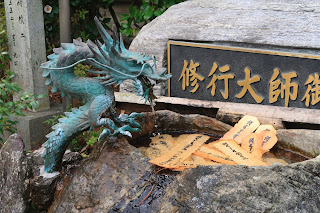
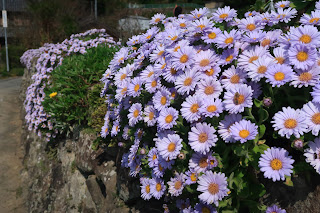
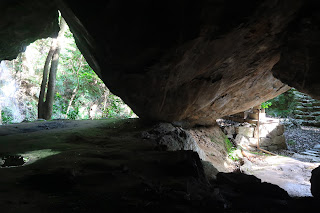
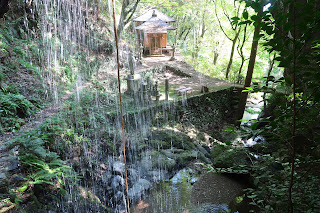
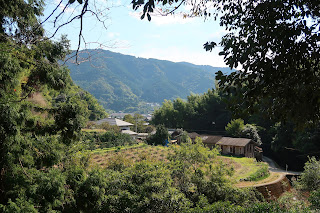
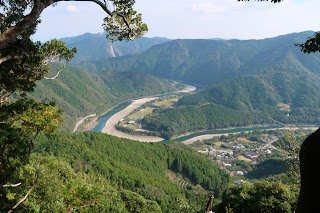
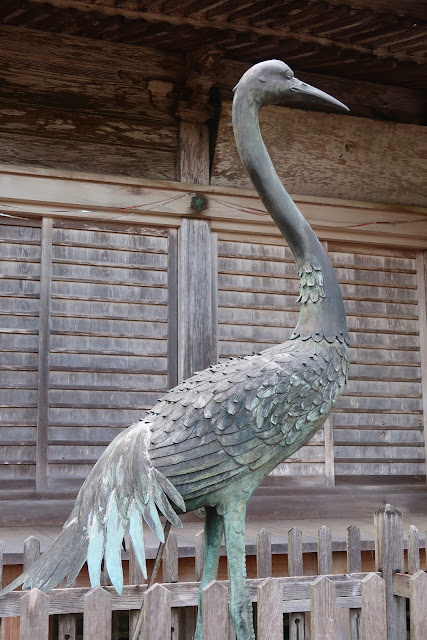
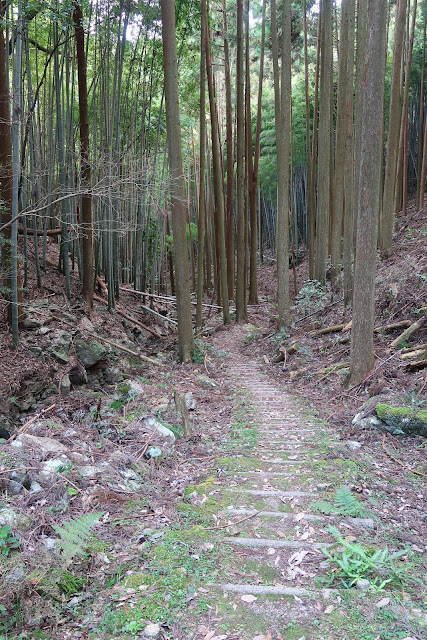











No comments:
Post a Comment